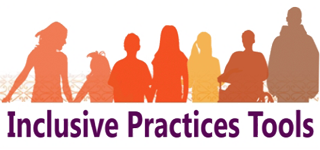Step 4: Implementing the IPT action plan
Step 4: Key points about implementing the IPT action plan
- Consider who will lead the process
- Involve the whole community
- Ensure staff, students, and the community have adequate learning opportunities
- Allocate extra resources to support new approaches
- Implement new actions thoroughly
- Monitor progress and using formative feedback
- Make on-going changes if necessary
Information for Step 4
Step 4 is about putting your plan into action. During Step 4 schools allocate resources, start to make changes, offer learning opportunities to staff, students, parents, whānau and caregivers, and monitor actions.
Implementing the action plan
Once you have developed an action plan (See Using Inclusive Practices data reports to develop an action plan: info for Step 3 and the IPT Action plan template [doc]), the next step is to implement this plan.
Research shows that the processes schools use to implement change are a key factor in determining the success of these changes. Using a team-based approach to manage change and involving the whole school community are ways of encouraging understanding and commitment to new approaches. These and other factors that can support change are discussed below.
Leading change
Effective leadership of new approaches is vital. The principal and other school leaders need to be actively behind any new approaches in your action plan. One way of supporting longer-term sustainability is through having more than one school leader or staff member actively supporting and promoting the changes. These people are likely to be core members of your school review team.
Planning for the long term
It can take a while for new approaches to become an everyday part of school life. Therefore it is important to have a longer-term view. Research suggests that the “start up” phase, during which a school decides on new approaches and starts to put them in place, can take at least 1-2 years. It can then take 3-5 years to fully embed new approaches. After a year or two, a change process can reach a plateau and start to lose momentum as other newer activities start to become the focus.
Research suggests that if momentum is not maintained, schools which are initially successful in developing new approaches can see a return to previous behaviours. Therefore, it is important to plan ways to keep the momentum going.
One way to do this is for the school review team to continue to manage and monitor action plan activities. Tasks can be shared and so if one key team member leaves, activities are more likely to continue. Another way is to make sure the whole school community are informed and involved. One key way of keeping an ongoing focus on actions is by making your action plan goals part of the school’s planning and reporting cycle.
Implementing new approaches as they are intended
Studies show that how externally-developed programmes or initiatives are implemented and supported makes a key difference. As part of your action plan, your school may decide to adopt an external programme or approach that has evidence of success. It is important to implement all parts of this new approach in the way they were intended, and to make sure that all those involved have adequate information and learning opportunities.
Before starting new approaches it is helpful to collect some form of baseline data, so that you know what school practice was like before the new approach. You can then compare this baseline to data that is collected later. Data from the Inclusive Practices Tools can be used to establish a baseline (see Using the Inclusive Practices Tools to review progress: info for Step 5).
Involving all staff, students, and the community in the process
Change is more likely to happen if the whole school community is on board. Enabling all members of the school community (staff, students, and parents, whānau and caregivers) opportunities to lead or contribute to the activities in your action plan is one way of making change happen.
Students can be involved in running activities for their peers, parents and whānau can co-ordinate community responses, and staff members can be responsible for different activities. Having a team approach supports new approaches to become embedded in school life.
Allocating extra resources
Consider how you will resource the actions in your plan. It can be difficult for teachers and other staff to fit extra responsibilities into their busy workloads without having extra time allocated. Consider:
- Do review team members or leaders need to be given release or management time to plan, manage, and monitor new activities?
- Does extra professional learning time need to be allocated for staff and planned into your school’s professional learning programme?
- Do time and resources need to be allocated for community sessions?
Offering adequate learning opportunities
In the reports from evaluations of new education initiatives it is common to see phrases such as “in order to fully understand and implement the changes, all staff would have benefitted from more PD”.
Sometimes only a lead teacher is able to attend a course or professional learning sessions. It is important for these learnings to be shared more widely with all staff, and to provide adequate learning opportunities for all others involved (students, non-teaching staff, parents and whānau).
You will also need to plan how you will provide students with information about any new approaches, and how you will collect feedback from them about how it is working.
What next? Monitoring progress and using formative feedback
A more formal review and revision of the action plan can occur every 3-5 years.
For more information see Using the Inclusive Practices Tools to review progress: info for step 5.
